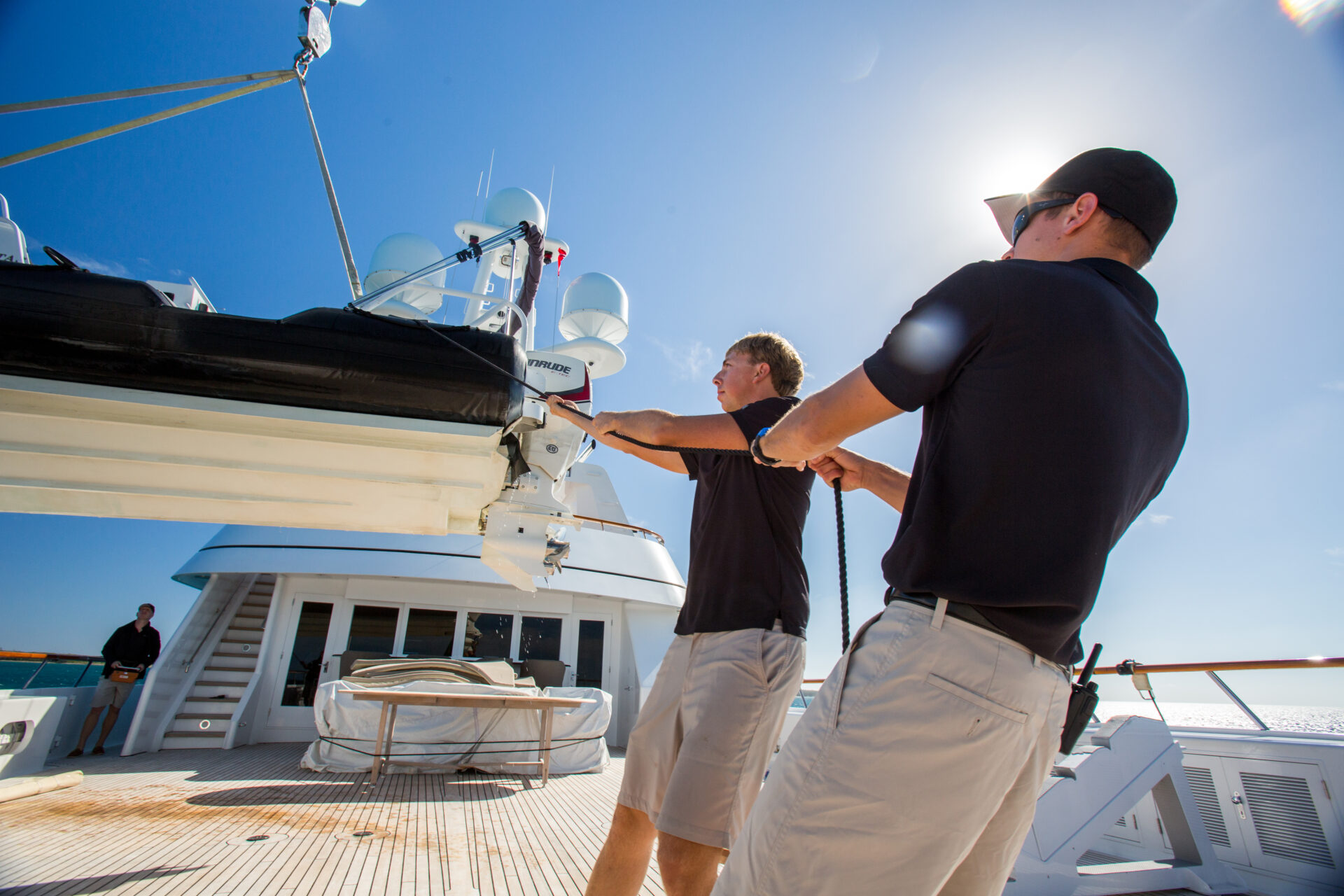When effectively managing a yachting team of any size, it is the Head of Department’s task to motivate crew to do their best work. HODs are often running big and dynamic teams and need to be well-versed in dealing with many different personalities, squashing conflict and promoting a healthy and happy environment onboard.
In this article, we took a look at Forbes’ 10 Management Styles, to understand how a management style can impact interactions with crew members, can affect decision-making, and what it could say about our values and beliefs, etc.

1. Autocratic
A top-down approach, an autocratic manager makes decisions without taking in much input from crew members. This person has full control of the crew, which doesn’t leave a lot of room for autonomy within the team.
Can be described as:
- authoritarian
- centralised
- dictatorial
Autocratic management enables the person in charge to take charge of a situation, and is useful for when times are tough and a crew is under pressure since the leader can quickly make a decision and move forward. But it isn’t always the most productive management style for a crew since others are likely to not feel listened to.
2. Democratic
With democratic management styles, the thoughts and input of the team are the forefront, as the team leader seeks their input to as their drive.
Can be described as:
- participative
- collaborative
- inclusive
HODs facilitate decision-making with consideration and debate that gives everyone a voice. And, although a higher amount of inclusivity may lead to slower decision-making, it ensures that projects and goals are seen from diverse perspectives, deepening a crew’s ability to innovate and adapt.
3. Laissez-Faire
This approach to management allows crew members to work independently and make decisions for themselves as they see fit, which leaves room for crew to take the initiative. A laissez-faire leader will usually focus on their own tasks instead of overseeing what everyone else is going. Unless someone requests feedback, they are not likely to offer much direction.
Can be described as:
- hands-off
- non-directive
- permissive
Yet, while this gives crew freedom, this style can sometimes foster a lack of direction and cohesion with unclear objectives.

4. Bureaucratic
With a bureaucratic management style, there is a lot of reliance on rules, policies, and procedures.
Can be described as:
- rules-based
- hierarchical
- structured
With this style, HOD’s base their work on standard criteria, plan projects according to procedure, and accurately assess goals. This makes for efficient decision-making and direct communication. However, unnecessary attention to rules and paperwork can slow down tasks and distract crew from completing their tasks sooner.
5. Servant Leadership
Employees’ needs, growth, and professional development are the priority for a manager, company or project conducted under a servant leadership management style. It puts team bonding and employee well-being on a pedestal.
Can be described as:
- selfless
- empathetic
- empowering
On one hand, crew members will feel heard, which can foster strong morale. On the other hand, if HOD’s focus solely on crew well-being, that could be to the detriment of the boat’s operations.
6. Coaching
A coaching management style focuses on giving regular feedback, training, and day-to-day support, which is all to develop crew skills and strengths.
Can be described as:
- supportive
- developmental
- mentorship-oriented
Under this management style, a manager can better understand their crew and therefore know how to use their strengths for the good of the yacht’s operations. While providing regular guidance to help crew improve achieving their tasks is incredibly supportive, this might take up a lot of time and resources.
Read More SYC: Yacht Crew Weigh In On Hours Of Rest
7. Charismatic
With this management style, a HOD uses their personality and energy to engage with crew. This aids a leader in relaying information and interacting with their crew in a reassuring, appropriate tone – especially when giving constructive criticism.
Can be described as:
- Inspirational
- charismatic
- visionary
This sort of leadership may come easily to some, but to others who aren’t naturally charismatic it can be a struggle to maintain. There is the danger of trying to constantly enforce positivity, so it’s important to avoid a culture of toxic positivity.

8. Transactional
A transactional management style is based on rewarding crew for meeting specific objectives.
Can be described as:
- exchange-based
- task-oriented
- contingent
Setting clear expectations, transactional managers will keep a keen eye on their crew member’s achievements, offering incentives as encouragement to finish tasks on time or ahead of schedule. Manager often set clear expectations, and they might offer regular feedback to help crew achieve objectives.
9. Transformational
A transformational management style aims to encourage crew to think outside of the box in order to reach their personal and professional goals.
Can be described as:
- visionary
- inspirational
- empowering
With this approach, managers have an eye on the big picture, and provide feedback to the owner/management company as well as their crew members. However, they must be mindful of crew attrition due to rapidly changing needs and goals.
10. Situational
A situational management style is a mix of all of the various managements styles.
Can be described as:
- adaptive
- context-driven
- flexible
This management style adapts to each situation and each person in the crew as the HOD understands the pros and cons of various management styles, when they work best, and how to apply them.
So, if your yachting job involves leading a team, it’s worth considering what type of management style you want to adopt, as it can mean the difference between a successful team dynamic and a disastrous one.
To keep up to date with the latest Superyacht Content News, click here.
Sign up to our Newsletter below:














.gif)






